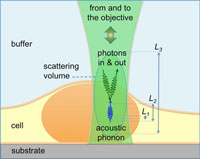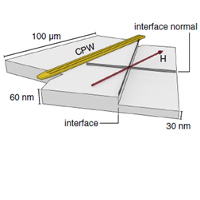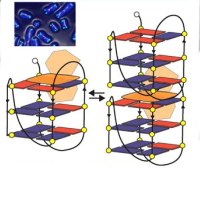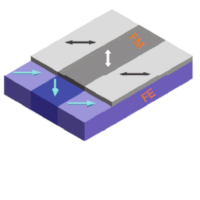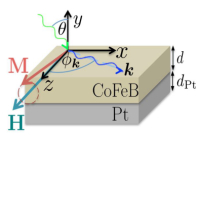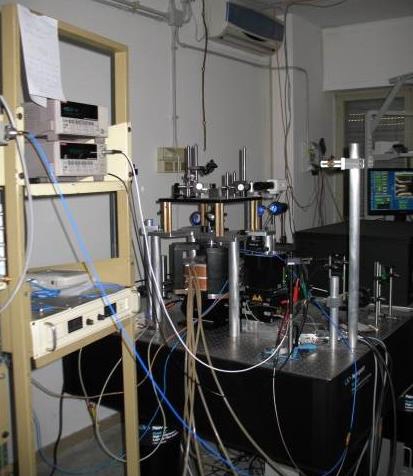Conventional and micro-focused Brillouin light scattering setups
Conventional and micro-focused Brillouin light scattering setups
Contact: Gianluca Gubbiotti
| Two optical tables are operative and used by the IOM researchers to perform conventional and micro-focused Brillouin light scattering (BLS) measurements. In the conventional BLS apparatus a laser beam from a solid state laser (532-nm line) is focused onto the sample surface using a camera objective of numerical aperture 2 and focal length 50 mm. The backscattered light was analyzed by a Sandercock-type (3+3)-pass tandem Fabry-Pérot interferometer. BLS measurements of the spin-wave frequency, can be performed as a function of the intensity of the applied magnetic field H up to 1T, the incidence angle of light, and the in-plane direction of H, with a spatial resolution of about 30 mm, determined by the diameter of the laser spot. |
|
The micro-focused BLS apparatus is characterized by a spatial resolution of about 250nm. The light source is a single-frequency, Diode-Pumped Solid-State laser (532-nm line). A dark-field objective, with numerical aperture NA=0.75 and long working distance 4.7 mm, focuses light perpendicularly on the sample surface. Using the same objective, a coaxial viewing system based on a collimated LED light source, a beam expander, and a CCD camera is used to visualize the laser spot and the sample region under investigation. The sample holder is controlled by a software which provides an active stabilization of the lateral and vertical position of the sample by compensating for position drifts. Microwave generator (frequency range 250 kHz - 20 GHz) and three-axes positioning stages of picoprobes can also be used for the rf-excited spin-wave experiments.
More details can be found here

